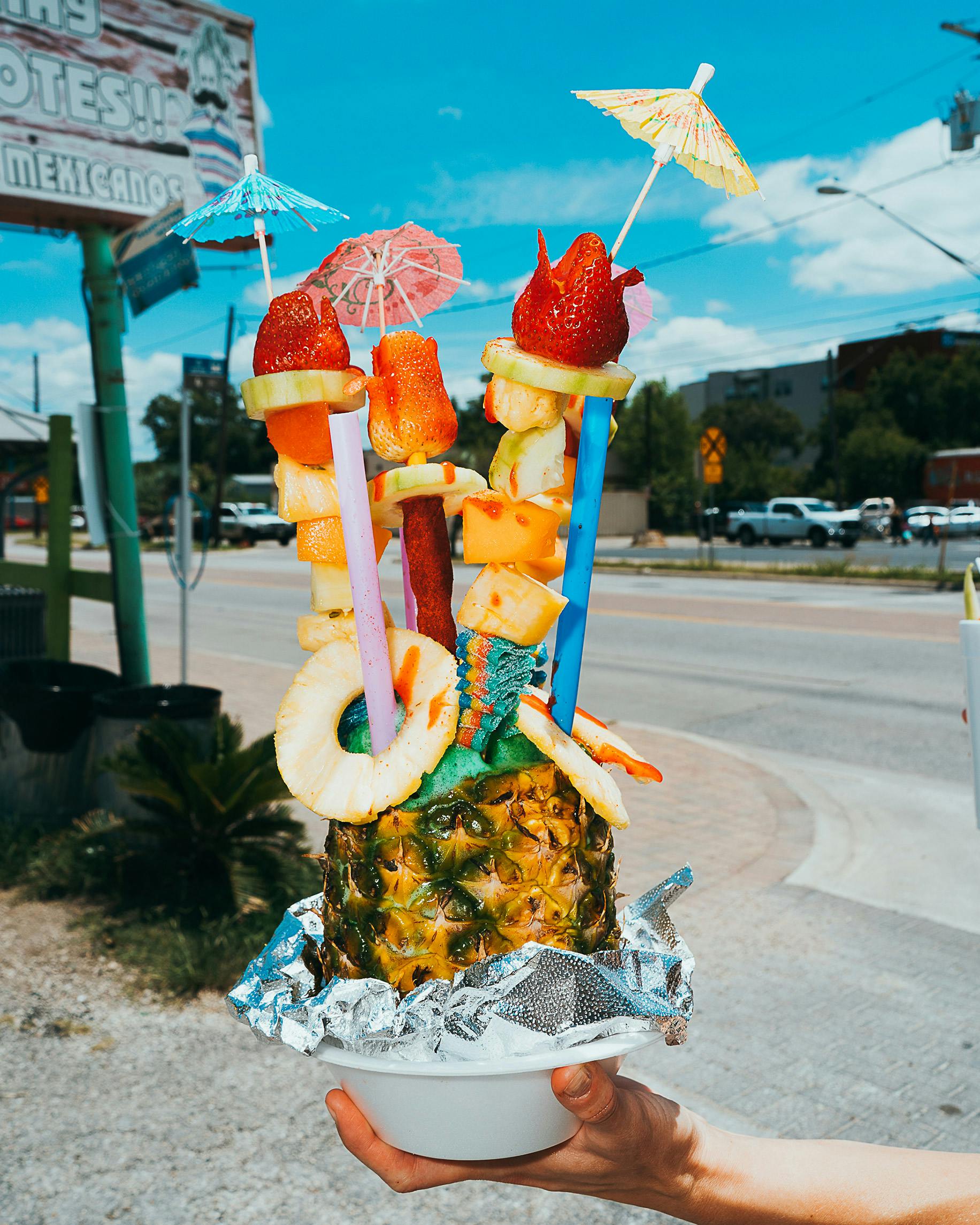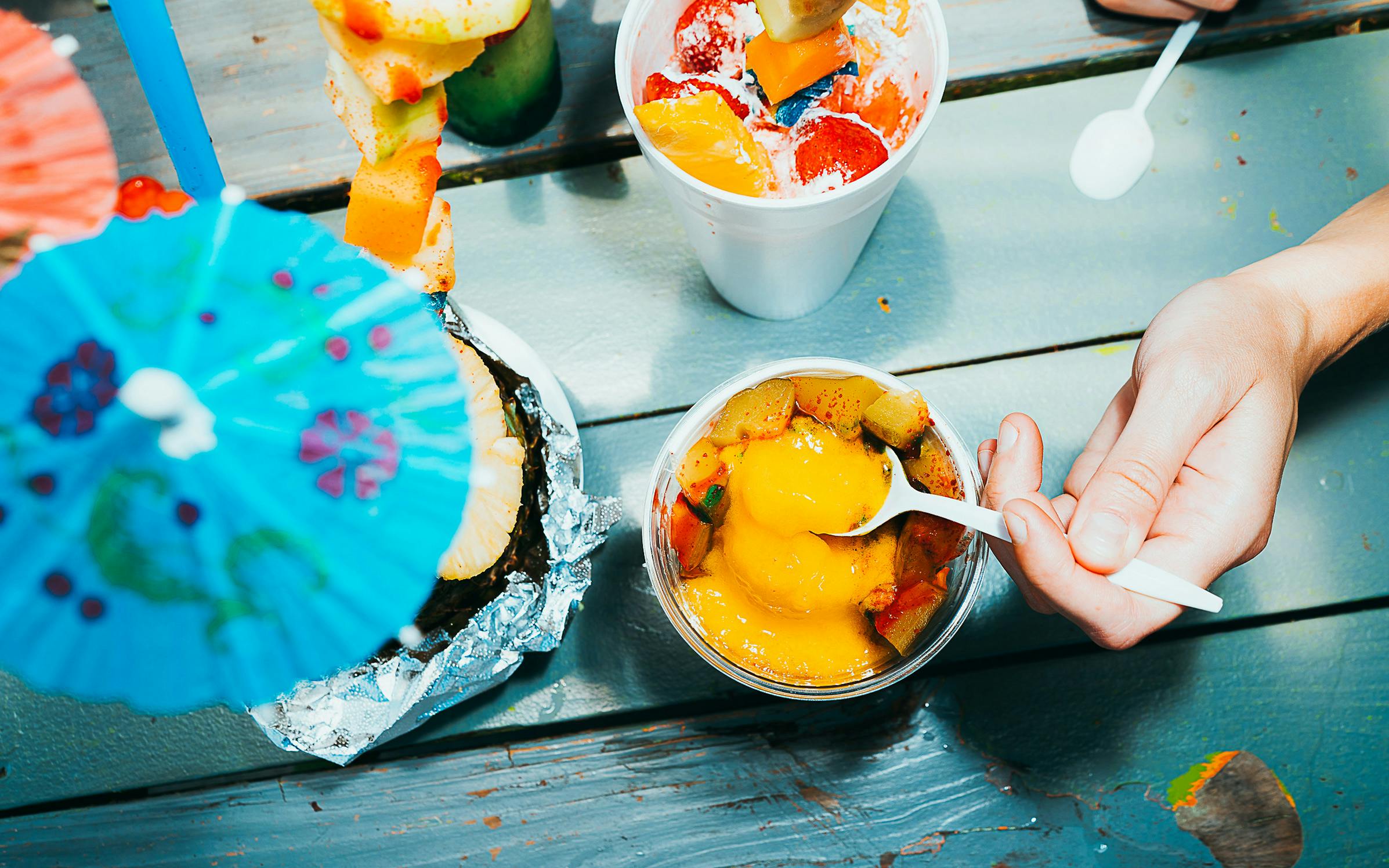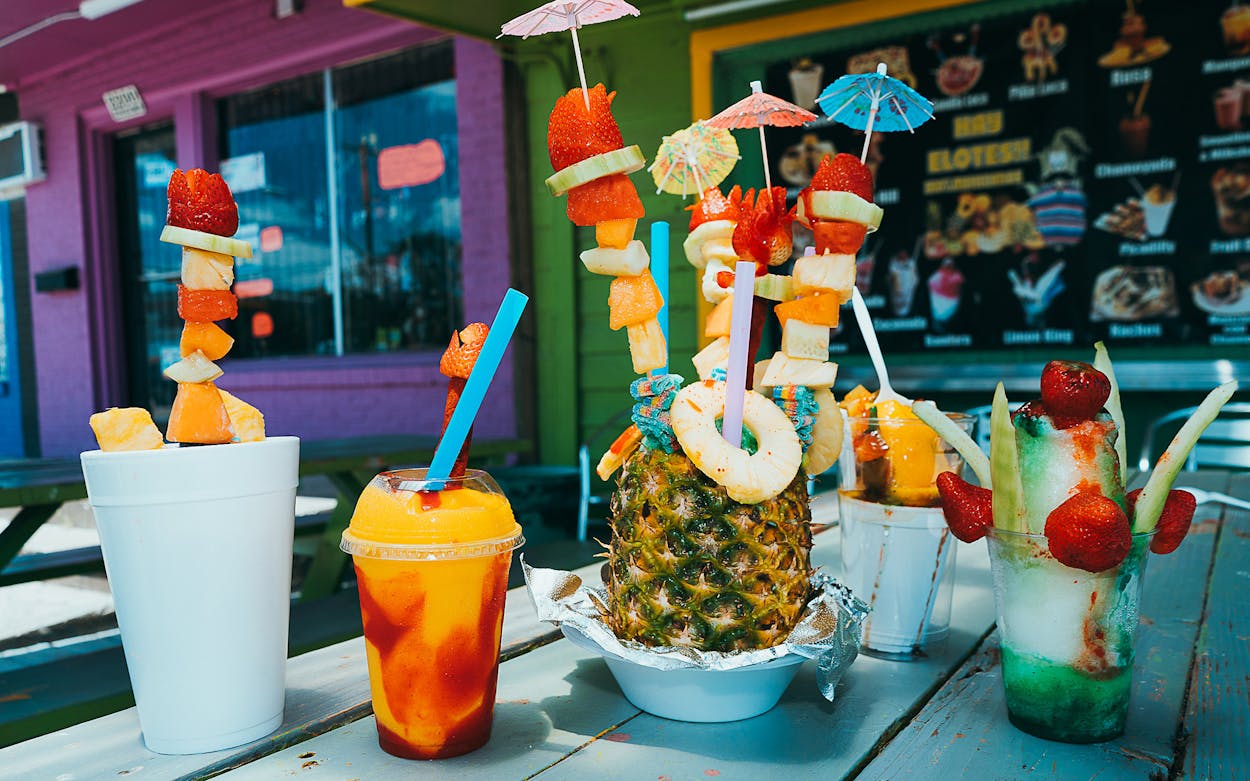There’s nothing like a South Texas summer. The air, laden with moisture from the Gulf of Mexico, mingles with the salty brushland for a sultriness and ardency unparalleled in any other part of the state. The days go on forever. Mornings are hot, sticky and mostly still, with just the faintest breeze to stir the palm fronds. Afternoons might see a refreshing rain shower, followed by breezes that cause the mesquites to sigh into the long blue evenings. When I was a child, life seemed to move very slowly here in the summer, which is why my little brother and I loved going to Tía Nena’s house.
My Tía Nena was not actually my aunt. She was a second cousin, once removed, of my grandfather, who lived two doors down in Harlingen. She lived modestly in a beige and brown frame house. Her dining room was more like a dry-goods store or a concession stand. Among the prints of Our Lady of Fatima and the Sacred Heart and stacks of yellowing phone books stood jars of dill pickles and boxes full of Canel’s candies and the beer salt known as SaLimón. She sometimes sold obleas, rounds of delicious Mexican caramel sandwiched by edible rice paper, cut into rounds and made to look like communion wafers. But what she was known around the neighborhood for were her homemade raspas—carefully arranged rows of clear Solo cups filled with sweet, colorful ice. You paid her a quarter and then ate them right out of the cup with a kitchen spoon, until you could lick out the last drops of the liquid with your tongue. Children from up and down Wright Street knew where Tía Nena’s house was and came with whatever they could save up to buy their afternoon snacks.


Tía Nena doesn’t make or sell raspas anymore, but I buy at least one every time I return to South Texas. Now, you may know them (or versions of them) by other names: sno-cones, Hawaiian ice, raspadas, raspados—perhaps even granizado or cholados. In Northern Mexico they’re called yukis (ostensibly from the Japanese word for snow) and have a storied history among connoisseurs of junk food in that country. But there can be no true rival to the South Texas raspa. Like all great food on the border, the raspa is an amalgam of traditions from many countries and cultures, but its Texan-ness is in its simplicity and singularity of taste.
Homemade raspas like my Tía Nena’s are a rarity. To get a real sense of what raspas are like, you need to go to roadside kiosks like Tropical Sno-Wiz, on M Street in Harlingen, or Mr G’s Sno-Cone, in San Benito. Although tiny and unassuming, these red-roofed huts stand out like beacons in a blistering landscape of scorching blacktop. During the hottest and most intemperate days of the canícula you can expect a wait of upwards of thirty minutes for a raspa. It’s all worth it when you are handed a tall Styrofoam cup of densely packed shaved ice full of sweet sticky syrup, occasionally crowned by fruit, cream, candy, or maybe even something savory. Raspas conjure up memories of blissful tropical days, replete with the sound of flip-flops slapping on the concrete and the gushing water hoses that sparkled in the triple-degree heat. They were welcome on the return to Harlingen after having spent all afternoon frying on the beaches at South Padre Island; I remember the rarified fruity lusciousness as we sucked up the syrup in the back of my uncle’s pickup truck in the surreal purple evening, while the June bugs buzzed under the fluorescent lights of the raspa stand.
There is most definitely an art to making a raspa. In its purest form it is simply corn syrup flavored with natural or artificial flavors, served on grated ice. The ice has a characteristic granular form and is nothing like the sno-balls of the East Coast, which have a finer texture. There is technique in the way the raspa artist (the rasparista, if you will) dispenses this liquid ambrosia, with a certain flick of the wrist, a certain Border savoir-faire that knows precisely when the ice has been thoroughly saturated. After that, a simple napkin is tied like a cravat around the neck of the raspa and served forth. The taste can be astoundingly sharp and acidic (like the margarita flavor at Mr G’s, resplendent with its notes of salt and lime) or mellow and warm (like leche quemada, whose taste is pleasantly akin to decadent Mexican caramelized milk, with its notes of browned butter and cinnamon). Other flavors bear mysterious names (what was precisely in Tigers Blood that made it taste so divine when I was young?) or, for many South Texas children, were foretastes of a cheap night at an overcrowded cocktail bar on South Padre in college (piña colada, anyone?).

We have to hand it to kids for making raspas popular—and not simply because they patronized their stands all summer long. Kids (but especially border kids) have such adventurous tastes. How else can you explain the crazy combinations of savory and sweet items sold at raspa stands? My childhood was full of red-mouthed friends who had the temerity to dip dill pickles into a packet of Tropical Punch Kool-Aid and call it a snack (the citric acid and red dye in the Kool-Aid added a fruity kick to the sour pickle). That is why, at raspa stands all over the Valley, the local special is the Picadilly, a hair-raising assortment of shaved ice covered with dill pickle chunks, covered in Kool-Aid powder and served with any number of sweet or savory combinations, including gummy bears, Sour Patch Kids, Rips (strips of gummy candy covered in salt and citric acid), fruit, or simply a dusting of Tajín seasoning. Sometimes chamoy, the Mexican cousin of Japanese umeboshi candy, is added as a pièce de resistance to an already Instagrammable calorie-counting nightmare. You can get the same flavors of a raspa in a cup of tropical fruit either covered with sweet table cream, chamoy, or dusted with Tajín seasoning. The real test of how in touch you are with your Chicano heritage, I am told, is based on how much Tajín you can withstand on anything, including fruit.
The real raspa aficionado knows how to manipulate or accentuate flavors to fit a desired palate: the leche quemada raspa, already a Valley favorite, can be augmented with cream to make something that tastes rich and decadent. I personally have never liked chamoyadas with their excessive, ostentatious, and sometimes offensive use of contrasting flavors and ingredients: call me a raspa minimalist—I like just the basics. Some raspa stands sell savory snacks too, like duros (bags of fried wagon-wheel dough soaked through and through with vinegary hot sauce and sometimes chamoy or Tajín), Frito Pies (which are not and have never been called ‘walking tacos’ where I’m from), and single cans of Coke and Dr Pepper. In South Texas, rare is the raspa stand complete enough to have elotes ready to serve; many in fact do not sell them, a task that is the responsibility of your local neighborhood elotero.

It’s easy to dismiss the raspa as a fluke, some strange mutation of Italian ice in a world of processed corn snacks, red dye 40, chili powder, MSG, and refined corn syrup. Detractors might say that it resembles nothing of its Asian forebears in Hawaii. Mexicans say that it is too American, with its elaborate and fantastic constructions of different colors and flavors. And of course there are practical dietary concerns, such as the oft-told rumor heard in Harlingen that chamoyadas can give you stomach ulcers, or that the sugar content in one raspa is enough to put you in a coma (a real concern in a region beset by the diabetes epidemic). But raspas carry a long, storied history—a history that touches on Chinese, Japanese, Macanese, Filipino, French, German, and American tastes.
Raspas have carved a very sizable (ice-cold) niche in South Texas fare. They serve as an important and necessary reminder of the fluctuating, imprecise worlds that American food inhabits. And whether you like them strong and acidic like a salt tide at Padre or sweet and mellow like a South Texas sunset, the raspa embodies all the lovely innocence and adventure of childhood, the rustle of mesquite fronds and the earthy smell of the south wind, the humidity of a July evening that finds itself at the bottom of a Styrofoam cup.
- More About:
- San Benito







